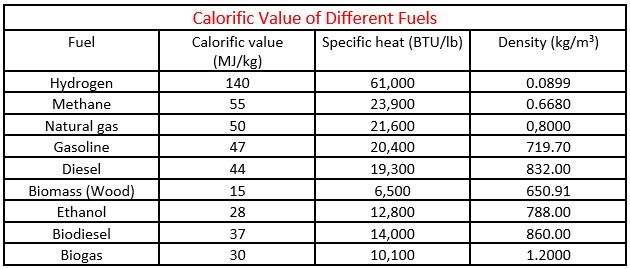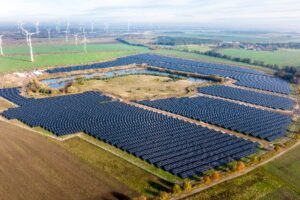Is Biomass Energy Renewable?

Biomass energy is considered today one of the alternative energy sources that could help mankind reduce its dependence on fossil fuels for a cleaner environment.
Being an alternative to fossil fuels, it only means that biomass can be used instead of coal to produce heat and electricity, but does not mean that biomass is also renewable or clean.
To become renewable, biomass needs to be a resource that never runs out.
Is Biomass Energy Renewable?
Mankind has used biomass as an energy source for thousands of years and the atmosphere was kept clean, but in the 20th century, when fossil fuels have become the main source of power on the planet, the atmosphere started to suffer due to the heavy air pollution produced by burning fossil fuels for energy and heat generation.
Biomass mainly consists of organic materials provided by plants and animals, which can be turned into energy.
Wood waste, plant and agricultural waste, energy crops and human trash are used as solid fuels for residential heating and electricity generation (in power plants).
Human and animal organic waste is converted into biogas, which is used as fuel.
Crops like corn and sugarcane, are used to produce ethanol, but the same biofuel is produced nowadays from poplar trees to avoid the consumption of food crops for green fuels production.
Due to the fact that wood and plant waste, agricultural waste, energy crops, trash, human and organic waste are all produced daily, biomass can be considered a renewable resource.
As long as mankind lives on the planet and we have forests and livestock, biomass will always represent a cleaner alternative to fossil fuels for energy and heat production.
How is Electricity Produced from Biomass?
Biomass consisting of wood waste, plant and agricultural waste, energy crops and trash can be used in thermal power plants as fuel for electricity production.
Biomass is burned in power plants exactly like coal, which produces heat and steam. The steam is used to spin a large turbine and produce electricity by turning the shaft of a massive generator.
There is static use of energy and mobile use of energy.
Static use energy is consumed in a fixed place, while mobile use energy will move vehicles.
A lot of renewable energy is produced today under the form of heat and energy, but because is hard to store heat and also electricity (batteries need to evolve to be able to store larger quantities of energy produced by renewables for longer periods of time), therefore renewable energy is mainly used for static use.
Biomass is available in a material form, which is an advantage because it can be easily stored and used directly to produce electricity and heat.
How is Biomass Used For Fuels Production?
For biofuels production, another type of biomass is used.
To produce ethanol, the first generation biofuels, mostly used a food crop (corn) to produce ethanol, and this biofuel is still used today mixed with gasoline to power vehicles.
For biodiesel production, vegetable oil is used to produce methyl esters. The mixture of biodiesel and diesel fuel can be used to power vehicles with diesel engines for lower emissions.
Second generation biofuels emphasized the use of non-food crops for biofuels production.
This way, lignocellulose (instead of corn), was used to produce ethanol.
Seeds Are Used For Vegetable Oil Production
Seeds of soybeans, rapeseed, canola, mustard, camelina, castor bean, sunflower, safflower and jatropha can be used to produce vegetable oil.
The seeds are stored in a reservoir located above the crusher.
The seeds fall due to gravity into the crusher, and there are separated into vegetable oil and a waste material called cake.
Being cold-pressed (not heated), the seeds are used entirely: the press produces vegetable oil and animal feed (the cake).
If sunflower seeds are used, the vegetable oil obtained can be used as food or for biodiesel production, while the cake resulted after pressing the seeds (the cake is not entirely dry, it still contains 11 to 15 percent oil), can be used to feed the animals.
Being used as animal feed, the resource is not wasted, because those animals will be consumed by humans.
To be used as fuel for diesel engines, the vegetable oil obtained by cold-pressing the seeds, needs to be filtered.
After being passed through three different types of filters, the vegetable oil becomes biodiesel, and can be used in diesel engines alone or mixed with diesel fuel.
To produce biodiesel, we can also use animal fats, used or waste oil and algae.
Calorific Value of Biomass and Biofuels Compared to Other Fuels
Today’s society mostly prefers energy that can be easily stored and provides a high calorific value because the higher the calorific value of the fuel (energy content), the further we can go.

Calorific value of different fuels, including biofuels.
Biomass (wood) has a pretty low calorific value (only 15 MJ/kg), which means that biomass can’t be used directly to power a vehicle.
However, the biofuels produced from biomass have a higher calorific value (closer to the calorific value of oil-based fuels).
This way, ethanol with a calorific value of 28 MJ/kg is used mixed with gasoline (calorific value of 47 MJ/kg), and biodiesel obtained from vegetable oil (calorific value of 37 MJ/kg) can be used directly in some diesel engines, or mixed with oil-based diesel fuel (calorific value of 44 MJ/kg).
Can Biomass Replace Fossil Fuels For A Cleaner Environment?
To better understand why we can replace the fossil fuels with cleaner sources of energy represented by biomass and biofuels, we first need to explain why are biomass and related products considered low-carbon energy sources.
Many will say that biomass is carbon neutral not a low-carbon source of power.
Are Trees Carbon Neutral?
Well, let’s explain this for everyone.
Photosynthesis is a biological process that allows plants to synthesize their own organic matter using the sunlight, atmospheric carbon dioxide (CO2) and water (H2O).
Photosynthesis mainly produces sugars (glucose) and oxygen (O2).
Carbon dioxide (a greenhouse gas) is trapped this way in solid form within the organic matter inside the plant.
When we or the animals eat the plant, we recover the energy stored by the plant throughout its entire life on the planet, but when we burn the plant for heat or energy production, the carbon dioxide stored inside the plant will be released into the atmosphere.
At this point, you will say that biomass is carbon neutral because the amount of carbon dioxide released through the burning process equals the amount of carbon dioxide captured by the plant throughout its entire life on the planet.
Well, this is not entirely true.
Burning Biomass Does Realease Harmful Gases in the Atmosphere
Burning biomass for heat and energy production does release the carbon dioxide stored by the plant, but besides CO2, other more potent greenhouse gases are released, such as: methane (CH4), carbon monoxide (CO), nitrogen dioxide (NO2), etc.
Methane is a way more powerful greenhouse gas compared to carbon dioxide, and carbon monoxide does not contribute directly to the greenhouse effect on the planet, but reacts with hydroxyl radicals (OH) in the atmosphere reducing their number.
Hydroxyl radicals have the role of reducing the lifetimes of strong greenhouse gases (methane) in our atmosphere, and by reducing their abundance in the atmosphere, carbon monoxide indirectly contributes to global warming.
To limit the greenhouse effect by stocking the largest amount of carbon captured by a tree during its lifetime, there is an optimum age (for each tree), when the tree should be cut down and replaced with a sapling.
However, burning biomass and biofuels is less harmful for the environment compared to burning hydrocarbons like fossil fuels, and this is the reason why is better to use biomass and waste products (human and animal organic waste, trash, etc.) to generate energy and heat than using coal, oil or natural gas.
Final conclusion
Using biomass as an alternative to fossil fuels does not mean that we can cut the forest to produce biomass for the power plant.
Only waste materials should be used to feed the power plant (wood and plant waste, agricultural waste, energy crops, trash, etc.) because we need the healthy trees to consume the large amount of carbon dioxide in the atmosphere, to lower the global temperature and reduce the effects of climate change.







